Enzalutamide inhibits PEX10 function and sensitizes prostate cancer cells to ROS activators
- PMID: 39097593
- PMCID: PMC11297951
- DOI: 10.1038/s41419-024-06937-7
Enzalutamide inhibits PEX10 function and sensitizes prostate cancer cells to ROS activators
Abstract
Sharply increased reactive oxygen species (ROS) are thought to induce oxidative stress, damage cell structure and cause cell death; however, its role in prostate cancer remains unclear. Enzalutamide is a widely used anti-prostate cancer drug that antagonizes androgen binding with its receptor. Further exploration of the mechanism and potential application strategies of enzalutamide is crucial for the treatment of prostate cancer. Here, we confirmed PEX10 can be induced by ROS activators while reduce ROS level in prostate cancer cells, which weakened the anti-tumor effect of ROS activators. The androgen receptor (AR) can promote the expression of PEX10 by acting as an enhancer in cooperation with FOXA1. The anti-tumor drug enzalutamide inhibits PEX10 by inhibiting the function of AR, and synergize with ROS activators ML210 or RSL3 to produce a stronger anti-tumor effect, thereby sensitizing cells to ROS activators. This study reveals a previously unrecognized function of enzalutamide and AR by regulating PEX10 and suggests a new strategy of enzalutamide application in prostate cancer treatment.
© 2024. The Author(s).
Conflict of interest statement
The authors declare no competing interests.
Figures
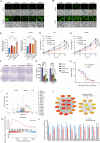
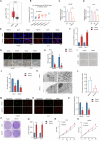

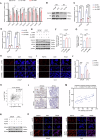
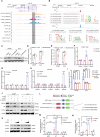
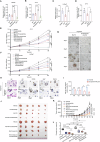

Similar articles
-
Oxidative stress in peroxisomes induced by androgen receptor inhibition through peroxisome proliferator-activated receptor promotes enzalutamide resistance in prostate cancer.Free Radic Biol Med. 2024 Aug 20;221:81-88. doi: 10.1016/j.freeradbiomed.2024.05.030. Epub 2024 May 16. Free Radic Biol Med. 2024. PMID: 38762061
-
Critical role of androgen receptor level in prostate cancer cell resistance to new generation antiandrogen enzalutamide.Oncotarget. 2016 Sep 13;7(37):59781-59794. doi: 10.18632/oncotarget.10926. Oncotarget. 2016. PMID: 27486973 Free PMC article.
-
Orally Bioavailable Androgen Receptor Degrader, Potential Next-Generation Therapeutic for Enzalutamide-Resistant Prostate Cancer.Clin Cancer Res. 2019 Nov 15;25(22):6764-6780. doi: 10.1158/1078-0432.CCR-19-1458. Epub 2019 Sep 3. Clin Cancer Res. 2019. PMID: 31481513
-
Darolutamide as a Second-Generation Androgen Receptor Inhibitor in the Treatment of Prostate Cancer.Curr Mol Med. 2021;21(4):332-346. doi: 10.2174/1566524020666200903120344. Curr Mol Med. 2021. PMID: 32881669 Review.
-
Androgen receptor splice variants in the era of enzalutamide and abiraterone.Horm Cancer. 2014 Oct;5(5):265-73. doi: 10.1007/s12672-014-0190-1. Epub 2014 Jul 22. Horm Cancer. 2014. PMID: 25048254 Free PMC article. Review.
Cited by
-
Gene Swin transformer: new deep learning method for colorectal cancer prognosis using transcriptomic data.Brief Bioinform. 2025 May 1;26(3):bbaf275. doi: 10.1093/bib/bbaf275. Brief Bioinform. 2025. PMID: 40515391 Free PMC article.
-
Peroxisomal Alterations in Prostate Cancer: Metabolic Shifts and Clinical Relevance.Cancers (Basel). 2025 Jul 4;17(13):2243. doi: 10.3390/cancers17132243. Cancers (Basel). 2025. PMID: 40647540 Free PMC article. Review.
-
ML210 Antagonizes ABCB1- Not ABCG2-Mediated Multidrug Resistance in Colorectal Cancer.Biomedicines. 2025 May 20;13(5):1245. doi: 10.3390/biomedicines13051245. Biomedicines. 2025. PMID: 40427071 Free PMC article.
References
MeSH terms
Substances
LinkOut - more resources
Full Text Sources
Medical
Research Materials

